This post may contain affiliate links. Please see our disclosure policy for more details.
Get your daily dose of veggies regularly with this ultimate list of the best vegetables for smoothies. It’s packed with tips and tricks to help you create delicious and nutritious blends to share with your kids.
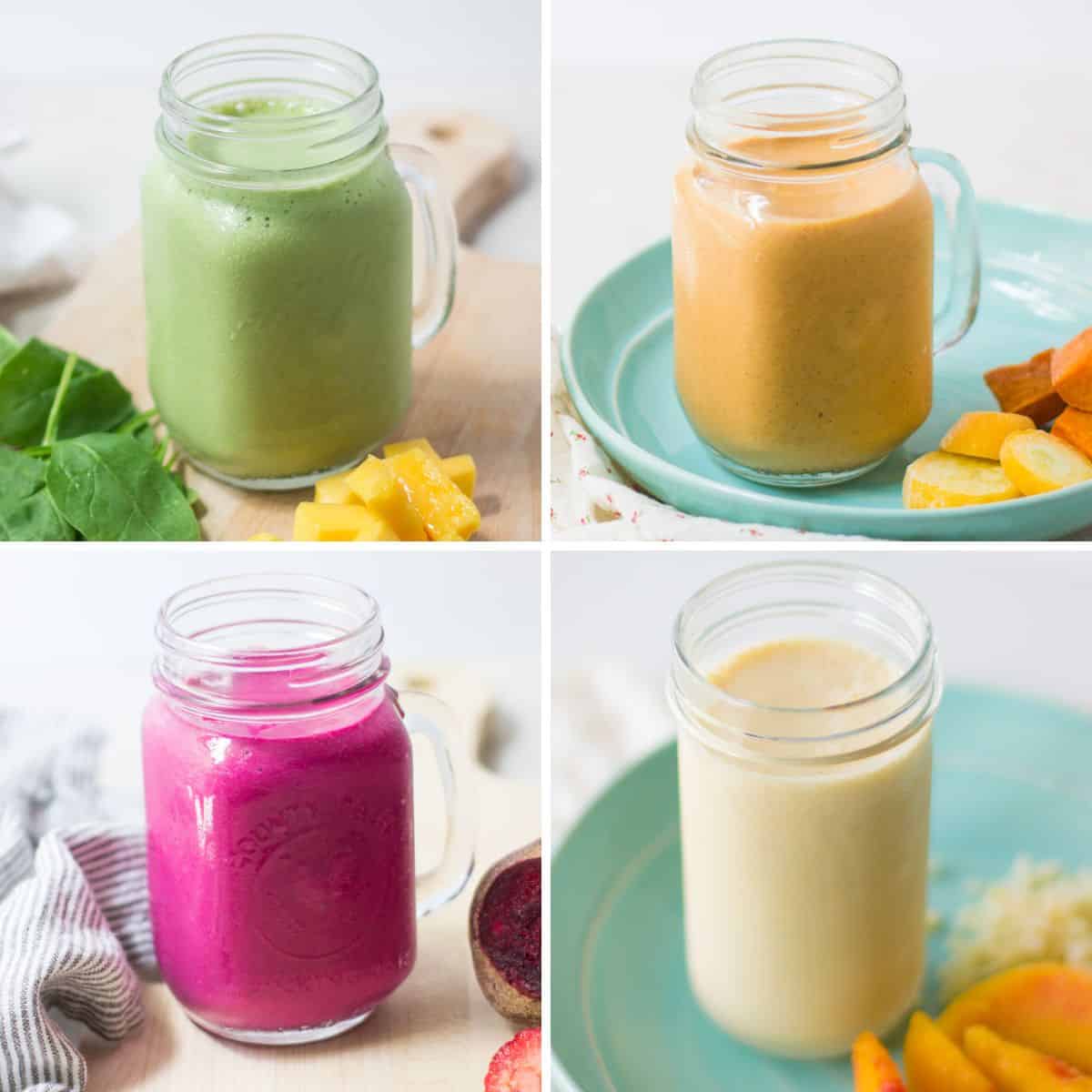
Why Add Vegetables to Smoothies?
We all know vegetables are so good for us and are an excellent source of many vitamins, minerals, and fiber. However, many of us find ourselves struggling to meet the daily recommended intake of vegetables (and fruits)!
And if you have a toddler, who’s going through so many developmental changes, or a picky eater, getting them to eat their vegetables can be quite the Herculean task. You are most definitely not alone.
Enter Veggie Smoothies!
They are such an easy and delicious way to boost nutrition and support overall health, and your child won’t even realize they’re eating vegetables.
BUT, I highly encourage you to invite your child into the kitchen and let them see the vegetables you’re adding. You can even let them choose and dump them into the blender.
When they are involved in the process, they can feel a sense of ownership and pride in their creation. As a result, they will be more likely to try vegetables in their whole form (not just sneaked in) and develop a love for healthy eating.
Table of Contents
Top Tips for Making Vegetable Smoothies
- You can use fresh or frozen vegetables. The latter provides a creamier texture and replaces the need for extra ice if you like your smoothies really chilled.
- Puree vegetables, like sweet potatoes and avocado and freeze in ice cube trays. Once frozen solid, pop them out and transfer to freezer bags. Now you can add however many cubes you wish to your smoothie at any time.
- If you find that your vegetable smoothie is a bit bitter or earthy, add more fruit or natural sweeteners like honey, maple syrup, or dates.
- Using a high-speed blender makes ALL the difference.
- Don’t be afraid to experiment! Try out different combinations and jot down your favorites! Soon you will have delicious list of veggie-packed smoothies that you can easily refer to.
Best Vegetables to Add to Smoothies
These are the top fruits that aren’t overpowering and blend well with fruits and other ingredients.
1. Healthy Greens for Smoothies
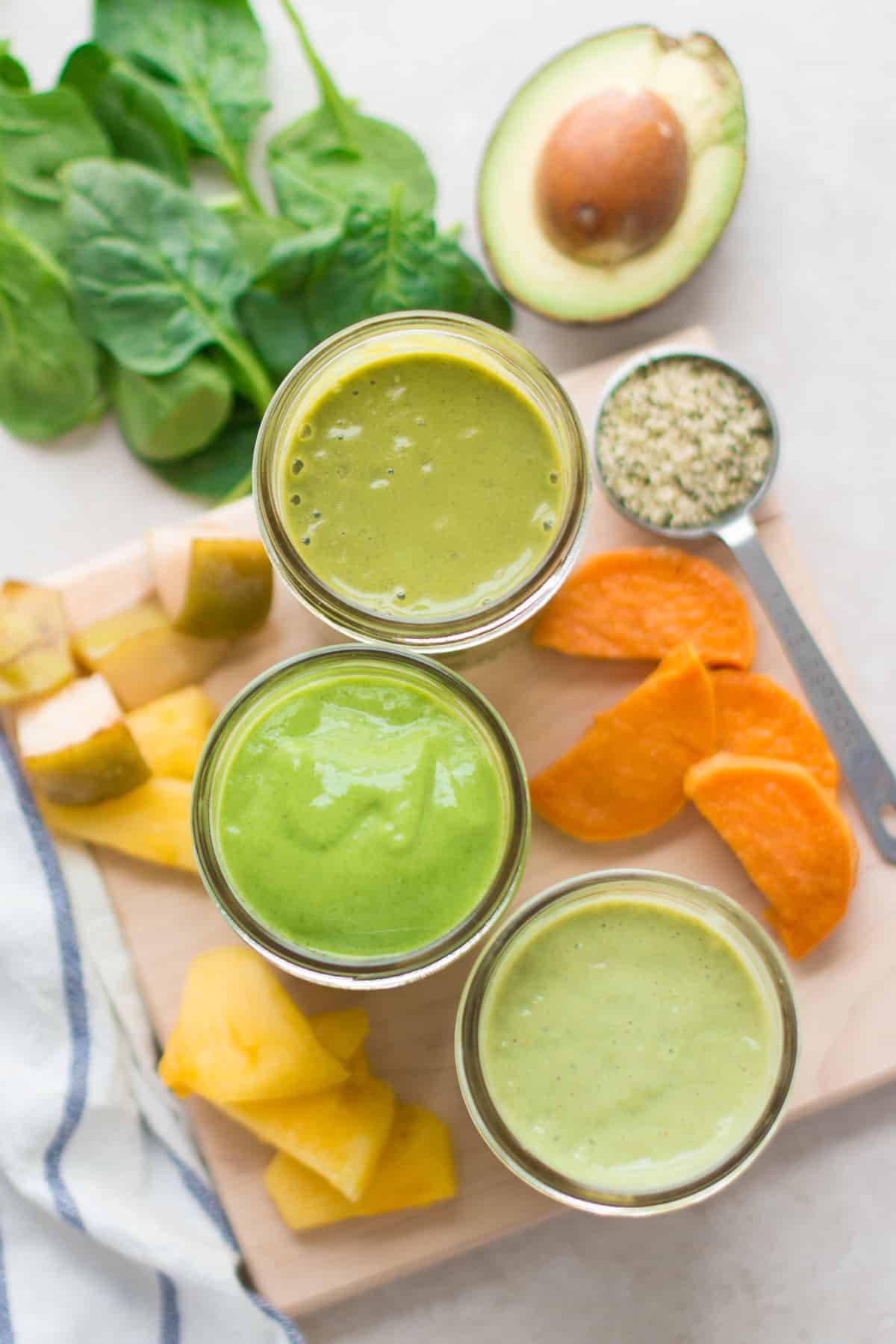
Leafy green vegetables are great sources of vitamin K, vitamin A, and vitamin C. You can use fresh or frozen.
- Baby spinach – if you’ve never added leafy greens to your smoothies, this is the best one to start with due to its mild flavor
- Kale
- Romaine lettuce
- Beet greens
- Swiss Chard
- Parsley
As all of these, minus the spinach, have a slightly bitter taste, be sure to pair with sweet fruits to balance out the flavors.
Here’s a ultimate guide to making ANY green smoothies.
2. Avocado
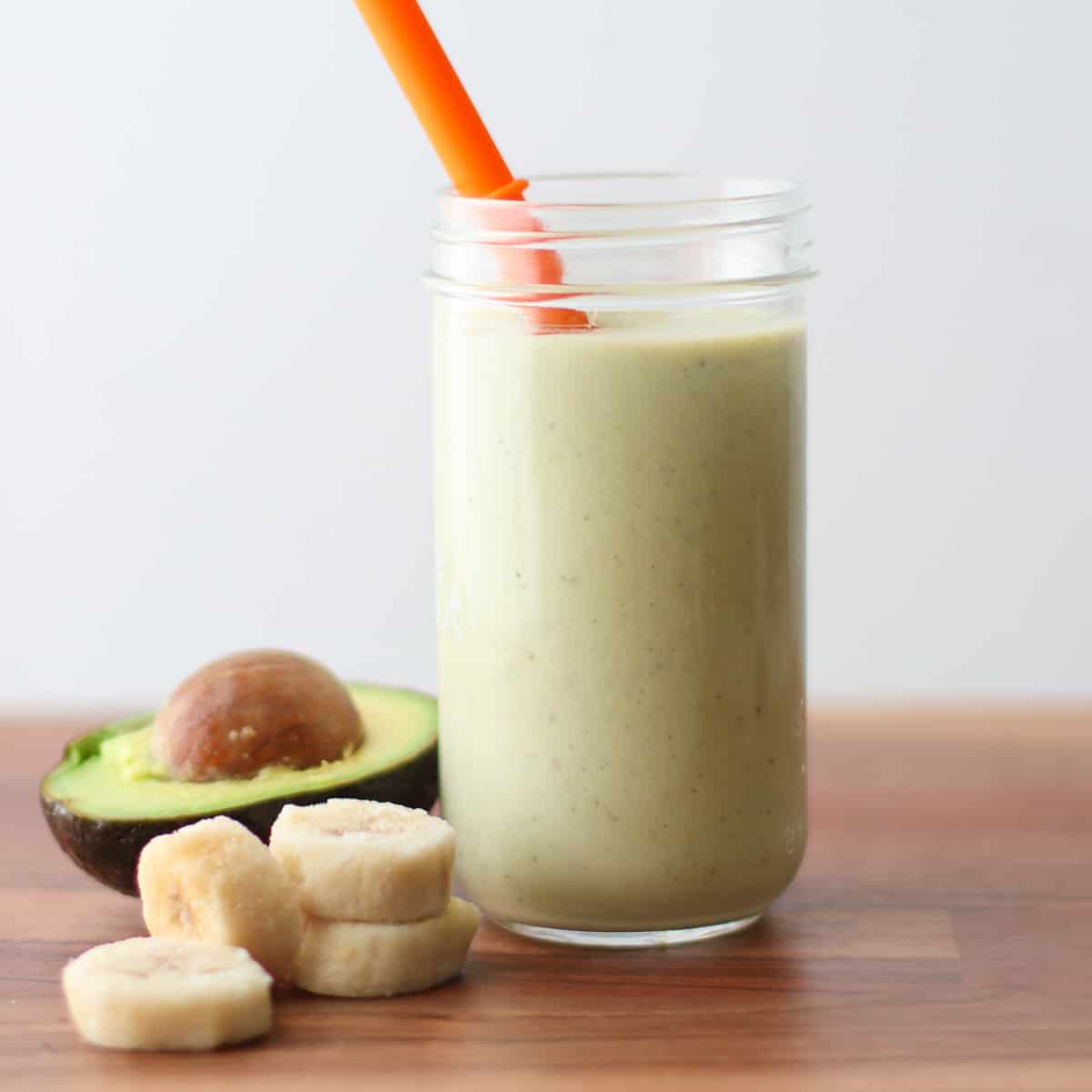
Yes, avocado is technically a fruit, but since it is not sweet and usually enjoyed like a vegetable, I’ve included it in the list.
Avocado has a mild flavor and complement many different fruit sand vegetables. It also adds a creamy texture and healthy fats to the mix.
Avocado pairs particularly well with tropical fruits, such as mango and pineapple, and the tart sweetness from berries pairs well with the creamy richness of avocado.
You can add a tablespoon of nut butter, such as almond butter, to your avocado smoothie for a nutty flavor and extra creaminess.
Try this creamy avocado banana smoothie!
3. Beets
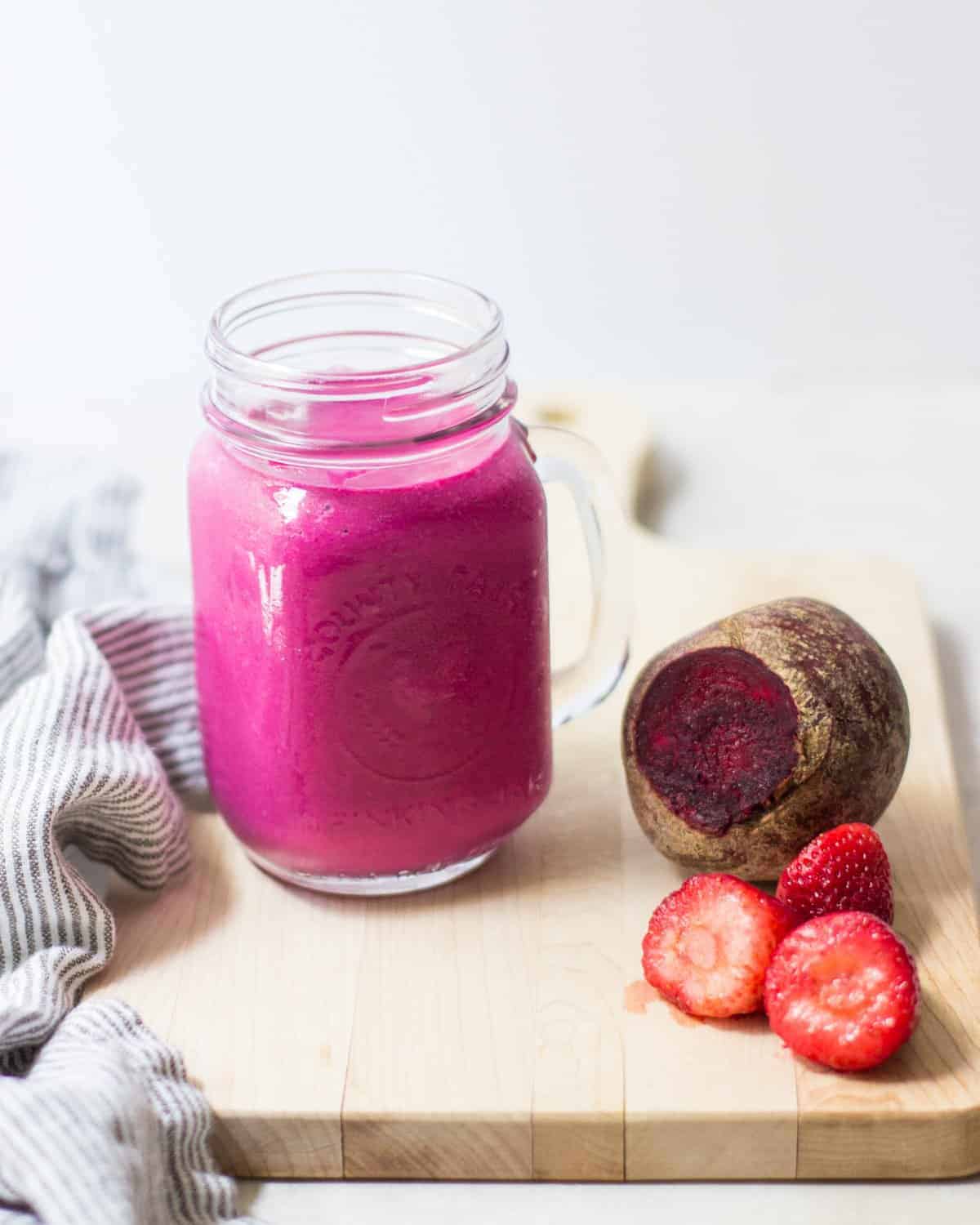
Beetroots are high in antioxidants, iron, and vitamin C, and adds a sweet and earthy flavor as well as a gorgeous color to smoothies.
It is best to cook it first to make it easier to blend and digest. It will bring out the sweetness more also. Here are several ways to cook beets.
Beets pair well with berries, citrus fruits, such as oranges, grapefruits, or lemons, ginger, apples, and carrots.
If you are new to beetroot, start with a small amount and gradually increase it as you get used to the flavor.
Try adding beets with:
- Strawberries, freshly squeezed orange juice, Greek yogurt, honey (optional)
- Carrots, fresh ginger, orange juice
- Pineapple, coconut milk, dates
- Banana, milk, peanut butter
- Apples, Greek yogurt, cinnamon
4. Butternut Squash
This winter squash (also technically a fruit) adds a sweet, nutty flavor and creamy texture to smoothies.
First cook the butternut squash and either dice or puree. Chill and add to smoothies or freeze for future use.
Try combining butternut squash with:
- Apples, almond milk, and a pinch of cinnamon
- Pears, coconut milk, and a few dates
- Carrots, orange juice, and a pinch of ginger
- Ripe banana, milk, and a dash of nutmeg
- Greek yogurt, fresh ginger, and a drizzle of honey
5. Carrots
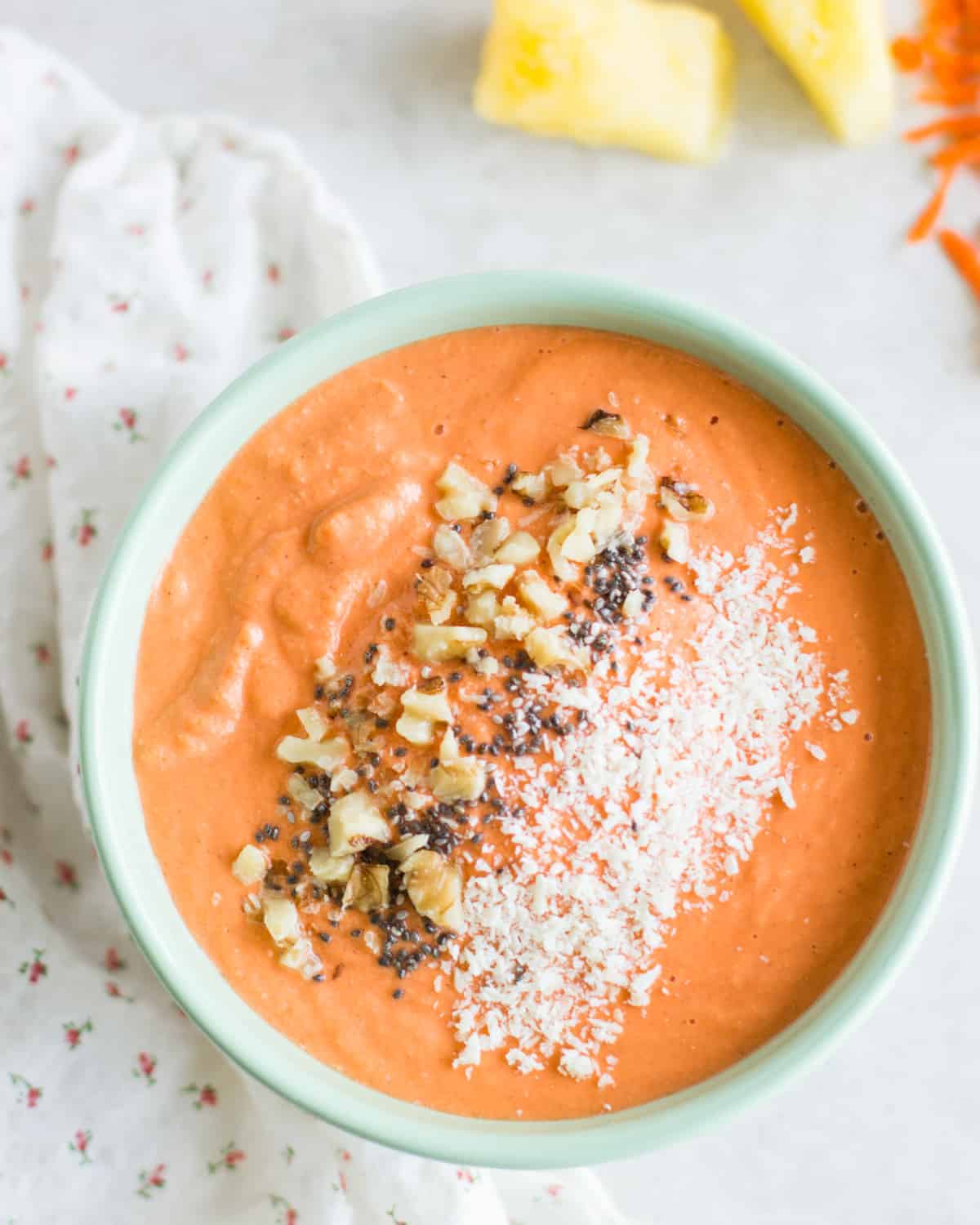
Adds natural sweetness and a bright orange color to smoothies. If using raw carrots, I recommend grating. While you’re at it, go ahead and grate extra to easily add to carrot muffins, baby oatmeal, carrot pancakes, and carrot walnut cake.
Or you can roast the carrots to add another layer of flavor to your smoothies.
Here are some flavor combinations to try with carrots:
- Apples, Greek yogurt, cinnamon
- Mango, fresh ginger, orange juice, Greek yogurt
- Orange, turmeric powder, ginger, dates
- Banana, almond butter, milk
- Pineapple, coconut milk, a tablespoon of chia seeds
Pictured: Carrot cake oatmeal smoothie bowl
6. Cauliflower
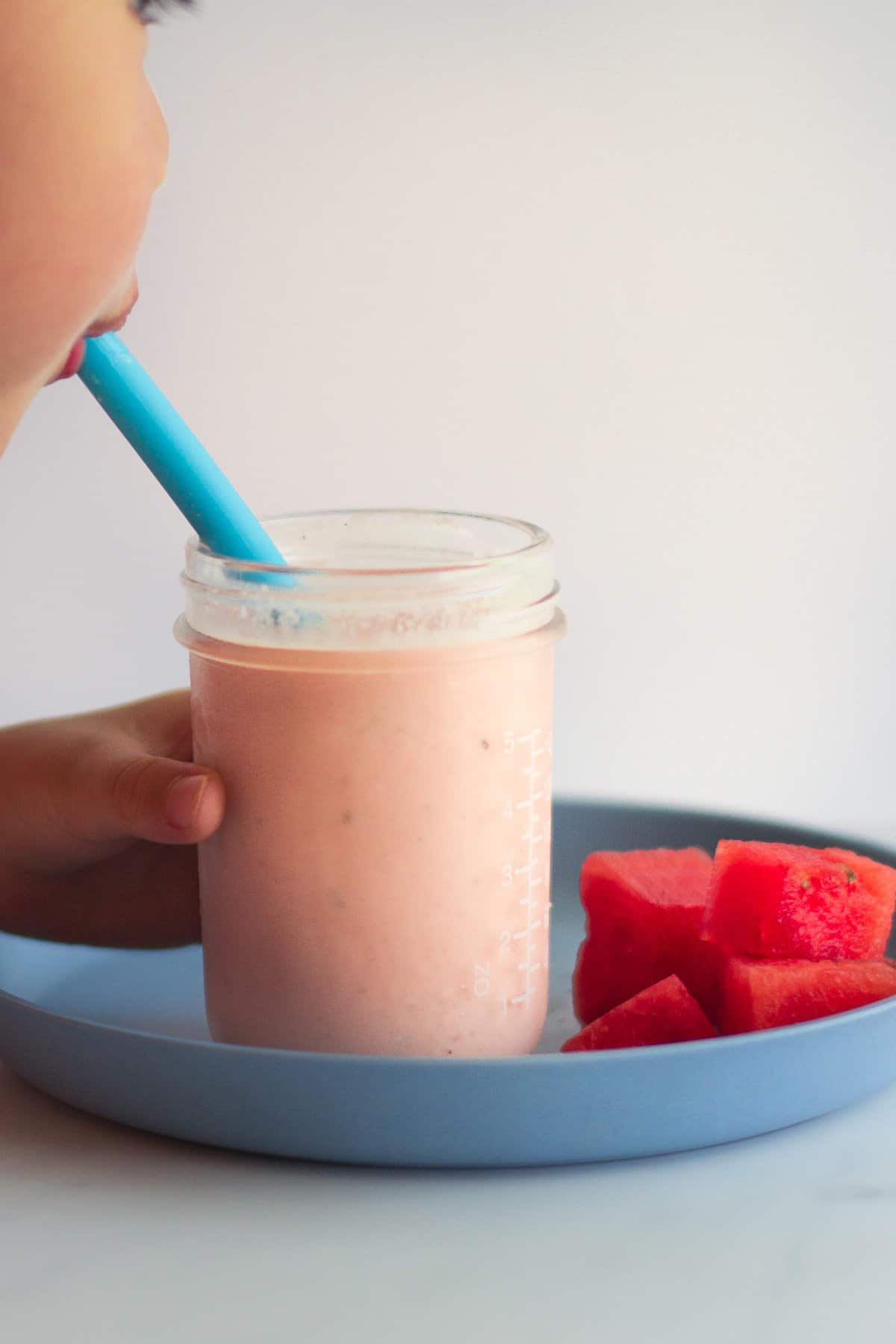
This is seriously one of the most versatile vegetables. It is rich in many vitamins and minerals, including vitamin C, vitamin K, folate, and potassium, as well as fiber.
Cauliflower has a mild, slightly sweet flavor that complement many other ingredients in a smoothie without overpowering them. It also adds a creamy texture.
You can use raw or cooked cauliflower. Chop into florets (prepare extra so you can make these homemade chicken nuggets!). Frozen riced cauliflower is also a great option.
Here are some combinations to try with cauliflower:
- Banana, peanut butter, milk
- Blueberries, coconut milk
- Mango, turmeric powder, ginger
- Pineapple, mint, lime juice, honey
- Baby spinach, avocado, milk, banana
And here are two of our favorite cauliflower smoothies – Watermelon smoothie and Peach Banana Smoothie.
7. Celery
The only way I can get my kids to eat celery is if I turn it into ants on a log or a celery smoothie. Celery is high in water content, which can help keep you hydrated and support healthy digestion.
It also has a mild, slightly salty flavor that can add a unique taste to smoothies.
- Spinach, apple, cucumber, lemon juice, ginger
- Pineapple, banana, orange juice, honey
- Carrot, apple, ginger, milk
- Cucumber, honeydew melon, coconut water
8. Cucumber
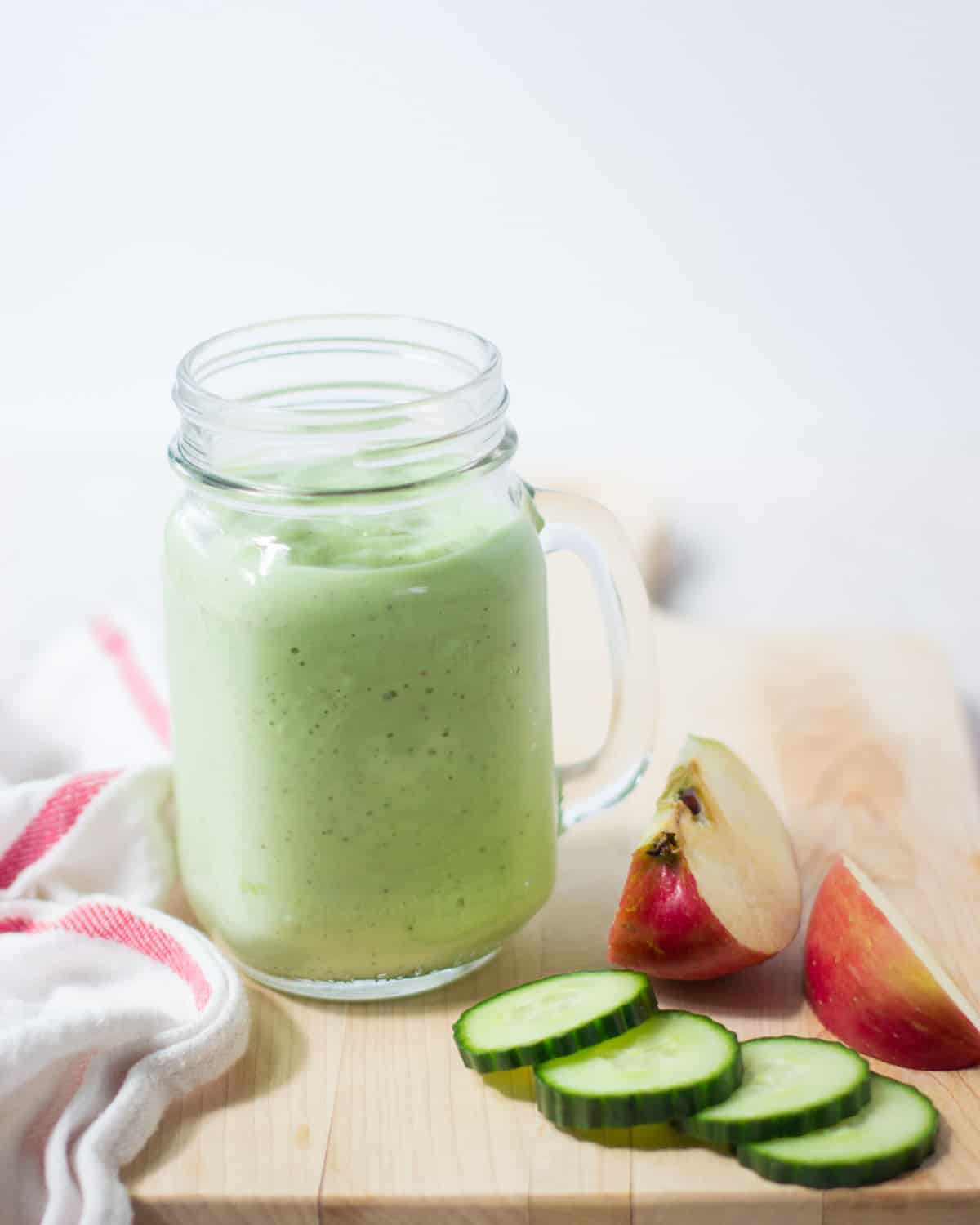
Cucumber is hydrating and adds a light and refreshing taste to smoothies. English cucumbers or mini cucumbers work best as it has a thinner skin. You can also peel it too, if you prefer but I try to keep the peel on whenever possible as it’s a great source of nutrients.
- Kale, apple, lemon juice, coconut water
- Blueberries, banana, milk
- Avocado, spinach, lime juice
- Pineapple, banana, ginger, milk
- Carrot, banana, almond butter
9. Green Peas
In my opinion, everyone should have frozen green peas in their freezer at all times. Not only are they nutritious, peas have a natural sweetness that can help balance out the flavors in a smoothie. They also add a creamy texture that can make a smoothie more satisfying.
Peas pair especially well with:
- Leafy greens
- Fruits – particularly berries, mango, banana, apple, pear, pineapple, lemon
- Herbs – mint, basil, or cilantro
- Nut butters
10. Pumpkin
Pumpkin isn’t just for the fall! Keep canned pumpkin on hand all year round to make bread, pancakes, and absolutely smoothies!
Pumpkin is particularly rich in nutrients that are important for maintaining healthy skin, vision, and immune function. It’s also a good source of dietary fiber.
It pairs well with warming spices like cinnamon, nutmeg, and ginger and all the fruits!
And here are some more healthy recipes with canned pumpkin.
11. Sweet Potatoes
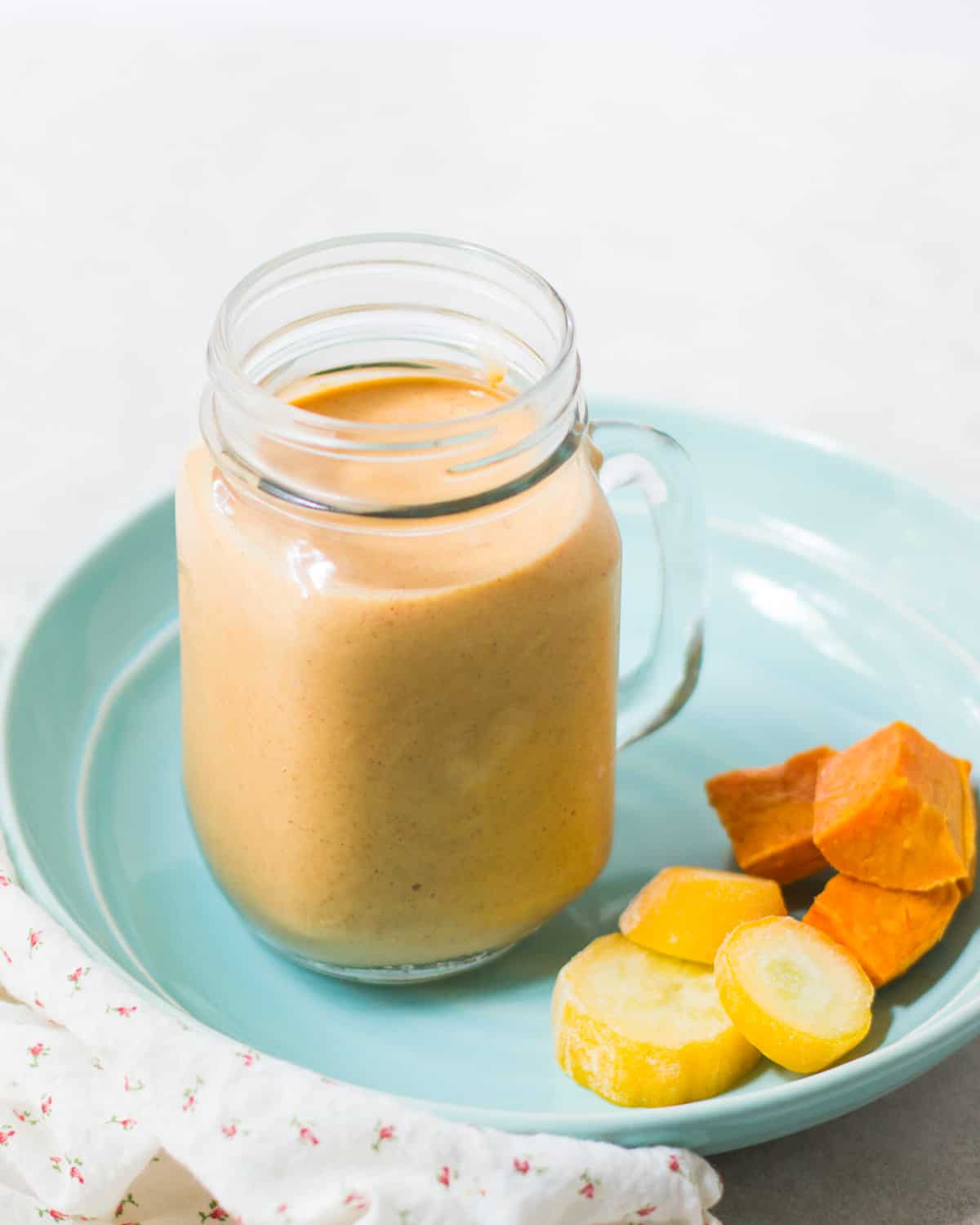
This is one of my personal favorite vegetables to add to smoothies. Plan ahead and roast extra sweet potatoes to quickly throw into smoothies. You can freeze them too!
Sweet potatoes add natural sweetness and makes the smoothies extra thick and creamy. Keep in mind that they are quite starchy so if you prefer a thinner consistency, add more liquid, like almond milk or coconut water to your smoothie.
12. Zucchini
Thanks to its mild flavor, zucchini is almost undetectable in smoothies. And due to its high water content and tender texture, this versatile vegetable adds a creamy and smooth consistency.
You can use fresh or frozen, peeled or unpeeled. I prefer to add raw zucchini because it’s easier and there’s really no need to cook it but if you have some leftover cooked zucchini, by all means add it in!
And there you have it! I hope this post inspires you to experiment with different combinations, embrace your creativity, and enjoy the countless benefits of these vegetables for smoothies!














